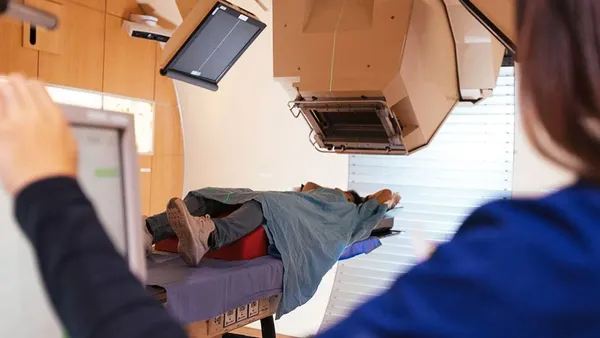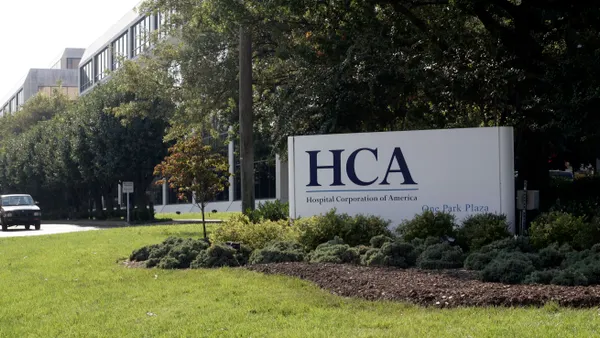Dive Brief:
- Higher Medicare Advantage enrollment isn’t associated with a change in hospital margins, according to new research from congressional advisory group MedPAC.
- The report released Friday found a small association between higher MA penetration in a hospital’s geographic area and lower revenue and costs, but no relationship between MA penetration and a facility’s profit.
- The findings throw cold water on hospital allegations that the privatized Medicare plans are contributing to shrinking margins, especially for cash-strapped rural facilities.
Dive Insight:
The share of Medicare beneficiaries enrolled in MA has increased significantly over the past decade. Currently, roughly 35 million Americans, or more than half of the entire Medicare population, are covered by the privatized plans, enticed by their more flexible benefits, out-of-pocket spending limits and prescription drug coverage — along with aggressive marketing by insurers.
This growth has come with concerns among some lawmakers, patient advocates and health policy researchers. MA costs the government more money than traditional Medicare. There’s evidence of profiteering from some participating health plans. Seniors may face higher barriers to accessing medical care.
And hospital groups have another worry: that MA plans result in higher costs and lower revenues at a time of shaky financial stability for many facilities, especially those in already underfunded rural areas.
Average MA payments to hospitals in rural areas were roughly 90% of traditional Medicare in recent years, according to the American Hospital Association.
Citing lower payments, onerous prior authorization policies and other issues, some facilities are declining to contract with MA plans. Becker’s Hospital Review found 27 systems that dropped MA insurers in the first six months of 2025.
Yet, despite hospitals ringing alarm bells about the privatized Medicare program, independent analyses of how MA insurance affects hospital financials have been limited and yielded mixed findings, according to MedPAC, an influential group that advises Congress on issues involving Medicare.
For its own study, MedPAC researchers analyzed cost report data from hospitals from 2013 to 2023, and compared it with MA penetration: the share of Medicare beneficiaries enrolled in the privatized plans in each hospital’s county.
MA plans are incentivized to lower costs, given that the government pays them per-member, per-month fees, MedPAC noted. The more inexpensive healthcare is, the more the plan gets to keep for itself.
That could result in MA plans negotiating rates for hospital services below what traditional Medicare pays, or lowering payments in other ways, like downgrading a more expensive hospital admission to a cheaper observation stay, the report says.
But on average, MedPAC found that higher MA penetration didn’t have a statistically significant effect on hospital profit margins. A 10 percentage point increase in MA penetration was associated with a 1.3% drop in revenue — but with a 1.2% drop in costs, too.
For critical access hospitals and for integrated health systems operating both a hospital and the MA plan it contracts with, there was no relationship between MA penetration and profits, revenues or costs.
The analysis “makes clear that concerns about Medicare Advantage harming hospital finances don’t match the data,” Susan Reilly, the vice president of communications for MA lobby the Better Medicare Alliance, said over email.
“These findings show that Medicare Advantage is delivering for seniors and taxpayers — not driving the financial challenges some hospitals have raised,” Reilly said.
Still, MedPAC stressed that the analysis showed associations, not causal relationships, and that the study didn’t include all factors that could be influencing the situation.
“MA enrollment changes may have unexpected effects on [fee-for-service] and MA payment rates,” researchers wrote.















